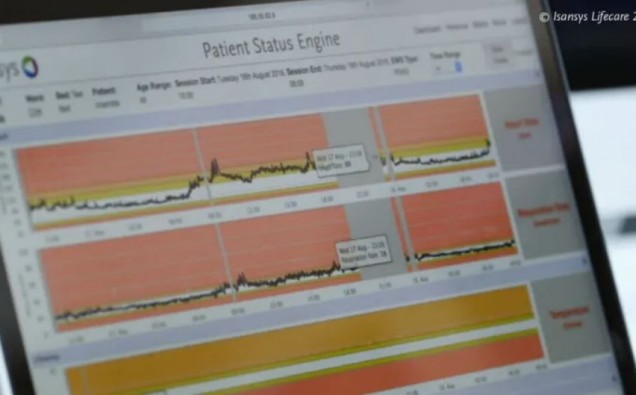The Patient Status Engine and Lifetouch sensor has been validated as an ideal remote monitoring system and used to create baseline heart rate variability (HRV) data sets from a group of healthy volunteers
Isansys Lifecare, a digital healthcare company and developer of the Patient Status Engine, an innovative patient monitoring platform, and the Lifetouch wireless “smart patch” cardiac sensor, today announces the results of a study pointing to a new pathway for managing patients with advanced liver disease based on new methods employing data-driven biomarkers.
One hundred and eleven patients were included in the collaborative study between the University College London Royal Free Hospital, UK, and the University of Bonn, Germany, which showed that a significant reduction in heart rate variability is a feature of acute decompensation of cirrhosis and, remarkably, predicts 90 day mortality in these patients.
In a preliminary study, the London team validated the Patient Status Engine and Lifetouch sensor as an ideal remote monitoring system and used it to create a baseline heart rate variability (HRV) data set from a group of healthy volunteers. They then used the Lifetouch to assess heart rate variability (HRV) remotely and non-invasively on patients admitted to the Royal Free Hospital with an acute decompensation (a significant deterioration) of advanced cirrhosis.
The results concluded that continuous, wireless monitoring of HRV is feasible in patients with advanced liver disease. The study also supported the hypothesis of both hospital teams that reduced HRV, correlates with severity of liver decompensation, facilitating the identification of high-risk patients, and allowing for timely interventions. In light of these findings, the study suggests the future potential for such continuous monitoring and the prospective health economic benefit of measuring HRV remotely.
The report said: “Traditional ECG measurement of HRV encompasses short-term 5-minute ECG segments being interpreted separately as reflecting HRV in that specific time window, under stable physiological conditions. The Lifetouch system by contrast, not only facilitates continuous monitoring irrespective of the individuals’ daily activity or physical ill-health but also helps negate the short coming of limited ECG time capture which make further interpretation difficult. Using the remote monitoring device, we were able to interpret HRV in all monitored in-patients with acute decompensation.”
Keith Errey, CEO of Isansys, said: “We are pleased to have been able to contribute to this important and ground-breaking work that has shown how patients, clinicians and providers will benefit from a new class of data driven biomarkers. We look forward to continuing the work with the two teams on the next full-scale demonstrator phase of this vital project.
“The Patient Status Engine is more than a remote patient monitoring platform. It is able to directly produce the most complete and accurate physiological data sets outside an intensive care unit, for all patients including those at home. These data sets are the basic requirements for transformative new ways of diagnosing and managing patients as AI and deep learning methods become more widely used in healthcare.”





















